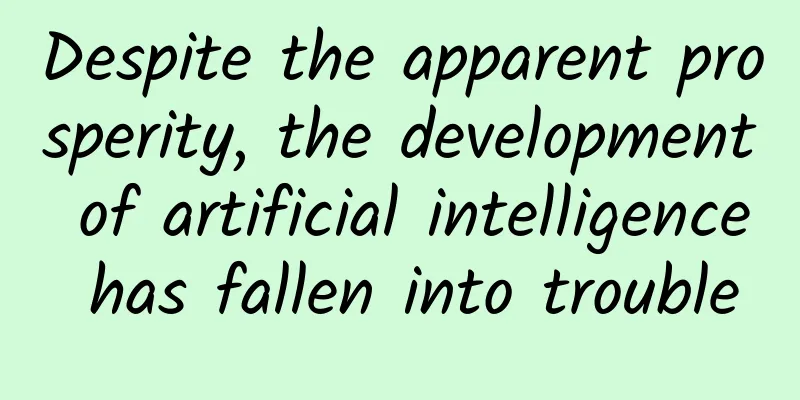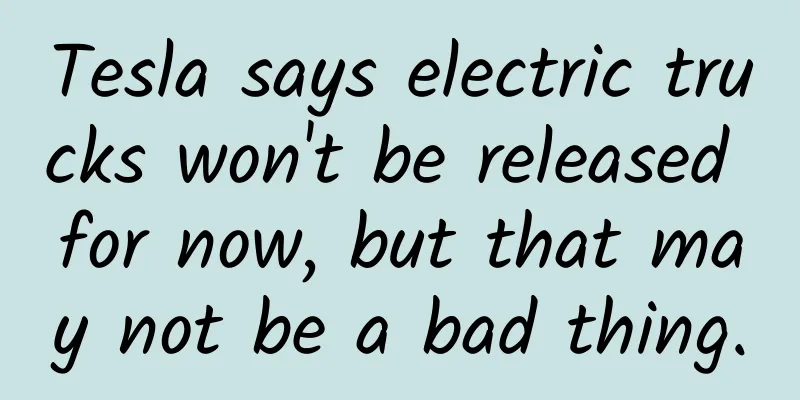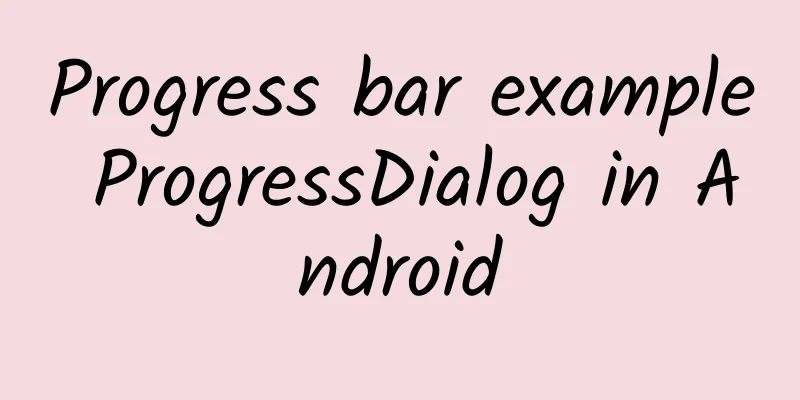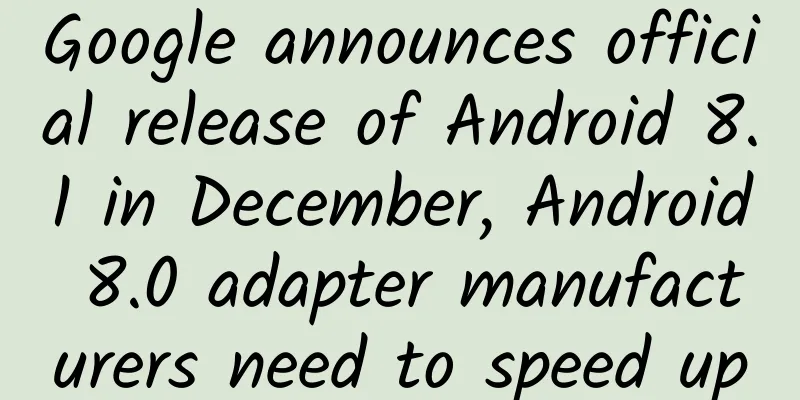Despite the apparent prosperity, the development of artificial intelligence has fallen into trouble

|
Wired magazine reported the development of artificial intelligence in its recently released December issue in the form of a cover story. Now, deep learning faces the dilemma of being unable to reason, which means that it cannot make machines as intelligent as humans. But what does real reasoning look like in machines? If deep learning can't help us achieve our goals, what can? The author of the article is Clive Thompson (@pomeranian99), and the original title is "How to Teach Artificial Intelligence Some Common Sense". one,Five years ago, programmers at London-based artificial intelligence company DeepMind watched with excitement as an artificial intelligence taught itself to play a classic arcade game. They used the hottest technology of the day — deep learning — to master Breakout on a seemingly “out-of-this-world” task. This is a game developed by Atari. In the game, you need to move the plate below to bounce the ball up and then knock down all the bricks above. Deep learning is a way for machines to teach themselves; you feed an AI a lot of data and it recognizes patterns on its own. In this game, the data is the activity on the screen—blocks of pixels representing bricks, balls, and player pads. DeepMind's AI, a neural network made up of layered algorithms, didn't know anything about how Breakout worked, its rules, its goals, or even how to play it. The coders simply had the neural network examine the results of each action, each time the ball bounced. What would this lead to? It turns out it's mastering some impressive skills. In the first few games, the AI just swung the flat plate around. But after a few hundred plays, it began to accurately bounce the ball. By the 600th game, the neural network used a move that expert human Breakout players use, chipping away at entire rows of bricks and sending the ball bouncing along the top of the wall. “This was a big surprise for us,” DeepMind CEO Demis Hassabis said at the time. “This strategy came entirely from the underlying system.” The AI, which has shown it can think with unusual subtlety, like a human, grasped the inner concepts behind Breakout. Because neural networks loosely mirror the structure of the human brain, in theory they should mimic our own cognitive style in some ways. This moment seemed to prove that theory correct. Last year, computer scientists at Vicorance, an AI company in San Francisco, provided an interesting reality check when they took an AI similar to the one used by DeepMind and trained it on Breakout. The results were great. But then they tweaked the layout of the game a little bit. In one iteration, they raised the plate higher; in another, they added an unbreakable area at the top. Human players can quickly adapt to these changes, but the neural network cannot. This seemingly smart AI can only play the Breakout method it has spent hundreds of games to master. It cannot respond to new changes. “We humans are not just pattern recognizers,” Dileep George, a computer scientist and one of Vicarious’ co-founders, told me. “We’re also building models of what we see. These are causal models—our understanding of cause and effect.” Humans can reason and make logical inferences about the world around us, and we have a large amount of common sense knowledge to help us discover new situations. When we see a slightly different game of Breakout than the one we just played, we realize that it probably has roughly the same rules and objectives. But on the other hand, the neural network knows nothing about Breakout. All it can do is follow the pattern. When the pattern changes, it can't do anything. Deep learning is the juggernaut of artificial intelligence. In the six years since it went mainstream, it has become the primary way to help machines perceive and understand the world around them. It powers Alexa’s speech recognition, Waymo’s self-driving cars, and Google’s instant translation. In some ways, Uber’s network is also a giant optimization problem, using machine learning to figure out where passengers need cars. Chinese tech giant Baidu has more than 2,000 engineers working on neural network artificial intelligence. Over the years, deep learning looked like it was getting better and better, inexorably leading to machines with intelligence as fluid and flexible as ours. But some argue that deep learning is facing a dilemma. On its own, they say, it will never produce generalized intelligence, because true human-like intelligence involves more than just pattern recognition. We need to start figuring out how to give AI common sense. If we don’t, they warn, we’ll keep hitting the limits of deep learning, just as visual recognition systems can be easily fooled by changing a few inputs—for example, tricking a deep learning model into thinking a turtle is a gun. But if we succeed, they say, we could see an explosion of safer, more useful devices — like medical robots that move freely through cluttered homes, fraud detection systems that don’t give false positives, and more. But what does true reasoning look like in a machine? If deep learning can’t get us there, what can? two,Gary Marcus, a 48-year-old, bespectacled, worried professor of psychology and neuroscience at New York University, is perhaps the most prominent naysayer of deep learning. Marcus first became interested in artificial intelligence in the 1980s and 1990s when neural networks were still experimental, and he has been making the same arguments ever since. “Not only was I late to the party, I was also trying to pee at the party,” Marcus told me when I met him at his apartment near New York University. (We are also personal friends.) “When deep learning first started to explode, I was like, ‘This is the wrong direction, guys!’ ” Back then, the strategy behind deep learning was the same as it is now. Let’s say you want a machine to learn to recognize daisies on its own. First, you need to write some algorithmic “neurons” and connect them layer by layer like a sandwich (as you use multiple layers, the sandwich gets thicker or deeper — hence “deep” learning). You feed an image of a daisy into the first layer, and its neurons make a decision based on whether the image resembles previous examples of daisies it has seen. The signal then moves to the next layer, where the process repeats itself. Eventually, the layers come to a conclusion. At first, the neural network is just guessing blindly; it more or less starts life as a blank slate. The key is to build a useful feedback loop. Every time the AI fails to identify a daisy, the set of neural connections weakens the link that led to the wrong guess; if it succeeds, it strengthens. Given enough time and enough examples of daisies, the neural network becomes more accurate. It learns to intuitively recognize some of the patterns of daisies, allowing it to recognize daisies (and not sunflowers or chrysanthemums) every time. This core idea — starting with a simple network and training it repeatedly — has been improved over time and seems to be applicable almost anywhere. But Marcus was never convinced. To him, the problem lay in the blank slate: It assumed that just as humans built their intelligence purely by observing the world around them, so too could machines. But Marcus doesn’t think that’s how humans work. He subscribes to Noam Chomsky’s theory of intellectual development, which argues that humans are born with a natural gift for learning, for mastering language and interpreting the physical world, rather than a blank slate. He points out that although many people believe that neural networks are intelligent, they do not seem to work like the human brain. For one thing, they are too data-hungry. In most cases, each neural network requires thousands or millions of examples to learn. Worse, every time you want the neural network to recognize a new type of item, you have to train it from scratch. A neural network that recognizes canaries is of no use at all in recognizing bird songs or human speech. “We don’t need a ton of data to learn,” Marcus said. His kids don’t need to see a million cars to recognize one. Even better, they can “abstract” so that when they first see a tractor, they know it’s a bit like a car. They can also work with counterfactuals. Google Translate can translate French into English. But it has no idea what the words mean. Marcus points out that humans grasp not only grammatical patterns, but also the logic behind grammar. You can give a child a fake verb, like pilk, and she will likely infer that the past tense is pilked. Of course, she hasn't seen the word before. She hasn't been "trained" to do it. She just intuitively knows some of the logic of how language works and can apply it to a new situation. “These deep learning systems don’t know how to integrate abstract knowledge,” says Marcus, who founded a company that created AI that learned with less data (and sold it to Uber in 2016). Earlier this year, Marcus published a white paper on arXiv arguing that without some new approaches, deep learning may never break through its current limitations. What it needs is a boost — additional or built-in rules to help it reason about the world. three,Oren Etzioni, a computer scientist who runs the Allen Institute for Artificial Intelligence in Seattle, is always smiling. He greets me in his bright office and leads me past a whiteboard scribbled with thoughts on machine intelligence. (“Define success,” “What’s the mission?”) Outside, young AI researchers wear headphones and tap away at their keyboards. Etzioni and his team are working on the common sense problem, which he defines as the two legendary AI moments — IBM’s Deep Blue’s victory over chess grandmaster Garry Kasparov in 1997 and DeepMind’s AlphaGo’s victory over the world’s top Go player Lee Sedol last year. (Google acquired DeepMind in 2014.) “With Deep Blue, we had a program that could make superhuman chess moves while the room was on fire,” Etzioni joked. “Right? Total lack of context. Fast forward 20 years, and we have a computer that can make superhuman Go moves while the room is on fire.” Of course, humans do not have this limitation. If a fire breaks out, people will sound the alarm and run for the door. In other words, humans possess basic knowledge about the world (fire burns things) and the ability to reason (you should try to stay away from an out-of-control fire). In order for AI to truly think like humans, we need to teach it things that all humans know, like physics (a ball thrown in the air falls) or relative sizes (an elephant can’t fit in a bathtub). Until AI has these basic concepts, Etzioni argues, it won’t be able to reason. With Paul Allen investing hundreds of millions of dollars, Etzioni and his team are working to develop a common-sense reasoning layer that can fit into existing neural networks. (The Allen Institute is a nonprofit, so everything they discover will be publicly available for anyone to use.) The first problem they face is to answer a question: What is common sense? Etzioni describes it as all the knowledge about the world that we take for granted but rarely say out loud. He and his colleagues created a series of benchmark questions that a truly rational AI should be able to answer: If I put my socks in a drawer, will they be there tomorrow? If I step on someone's toes, will they get angry? One way to acquire this knowledge is to extract it from humans: Etzioni’s lab is paying crowdsourced workers on Amazon Mechanical Turk to help them craft common-sense statements. The team will then use a variety of machine learning techniques—some old-fashioned statistical analysis, some deep-learning neural networks—to train on these statements. If they do it right, Etzioni believes they can produce reusable “Lego blocks” of computer reasoning: one set to understand text, one to grasp physics, and so on. Yejin Choi, one of the scientists working on common sense at Etzioni, has led several crowdsourcing efforts. In one project, she wanted to develop an AI that could understand a person’s actions or state their underlying intentions or emotions. She began by poring over thousands of online stories, blogs, and idioms in Wiktionary, extracting “phrase events” like “Jeff knocked Roger unconscious.” She then anonymously recorded each phrase—“X knocked Y unconscious”—and asked crowdsourced workers on the Mechanical Turk platform to describe X’s intentions: Why did they do it? Once she had collected 25,000 of these labeled sentences, she used them to train a machine learning system to analyze sentences it had never seen before and infer the sentence’s sentiment or intent. At best, the new system worked only half the time, but when it did, it demonstrated some remarkably human perception: Give it a sentence like “Oren cooked Thanksgiving dinner,” and it predicted that Oren was trying to impress his family. “We can also make inferences about other people’s reactions, even if they’re not mentioned,” Choi said. “So X’s family might feel impressed and loved.” Another system her team built used crowdsourced humans on the Mechanical Turk platform to label people’s mental states in stories; the resulting system could also draw some “sharp” inferences when given a new situation. For example, I was told that a music coach was furious about his band’s poor performance and said “the coach was so angry he threw his chair.” The AI would predict that they would “feel horrified afterwards,” although the story didn’t explicitly state this. Choi, Etzioni, and their colleagues aren’t giving up on deep learning. In fact, they think it’s a very useful tool. But they don’t think there are shortcuts to convincing people to explicitly state the weird, intangible, implicit knowledge we all possess. Deep learning is garbage in, garbage out. It is not enough to feed a neural network a lot of news articles because it will not absorb the unstated knowledge, which is the obvious thing that the writers don't want to mention. As Choi Ye-jin puts it, “People don’t say ‘My house is bigger than me.’ ” To help with this, she asked crowdworkers on the Mechanical Turk platform to analyze the physical relationships implied by 1,100 common verbs, such as “X threw Y.” This, in turn, provided a simple statistical model that could infer from the sentence “Oren threw a ball” that the ball must be smaller than Oren. Another challenge is visual reasoning. Aniruddha Kembhavi, another AI scientist on Etzioni’s team, showed me a virtual robot strolling around a screen. Other scientists at the Allen Institute built Sims-like houses filled with everyday objects—kitchen cupboards filled with dishes, sofas that could be moved around and manipulated in a way that obeyed the laws of physics in the real world. Then they designed the robot, which looks like a dark grey trash can with arms, and told it to search for certain objects. After completing thousands of tasks, the neural network gained a basis for real-life use. "When you ask it 'Do I have any tomatoes?' it doesn't open all the cupboards. It's more likely to go to the fridge," Kembave said. "Or if you say 'Find me my keys,' it doesn't try to pick up the TV. It goes behind the TV. It has learned that TVs are not usually taken away." Etzioni and his colleagues hope that these different components — Choi’s language reasoning, visual thinking, and other work they are doing to get AI to grasp textbook scientific information — will eventually come together. But how long will it take, and what will the final product look like? They don’t know. The common-sense systems they are building will still be wrong, sometimes more than half the time. Cui Yejin estimates that she will need about a million artificial languages to train her various language parsers. Building common sense seems incredibly difficult. Four,There are other reasonable ways to build machines, but they're more labor-intensive. For example, you could sit down and write out by hand all the rules that tell the machine how the world works. That's how Doug Lenat's Cyc project works. Over 34 years, Lennart has employed a team of engineers and philosophers to write 25 million common-sense rules, such as “water is wet” or “most people know their friends’ names.” This allows Cyc to infer: “If your shirt is wet, you were probably in the rain.” The advantage is that Lennart can control exactly what goes into Cyc’s database; that’s not the case with crowdsourced knowledge. This kind of brute-force manual AI has become unpopular in the world of deep learning. That’s partly because it can be brittle: without the right rules for the world, the AI can get stuck. This is why programmed chatbots are so dumb; if they’re not explicitly told how to answer a question, they have no way of reasoning it out. Cyc is more capable than a chatbot and has been approved for use in health care systems, financial services and military programs. But progress has been slow and expensive. Lennart said it cost about $200 million to develop Cyc. But programming it manually bit by bit might just be replicating some of the inherent knowledge that, according to a Chomskyite, the human brain possesses. That’s what Dilip George and his researchers did with Breakout. To create an AI that wouldn’t get “stuck” in response to changes in the game’s layout, they abandoned deep learning and built a system with hard-coded underlying assumptions. George told me that their AI had effortlessly learned that “objects exist, that objects interact with each other, and that the motion of an object has a causal relationship with its collisions with other objects.” In Breakout, the system developed the ability to weigh different courses of action and their possible outcomes. But it also backfired. If the AI wanted to break a brick in the upper left corner of the screen, it would rationally place the tablet in the right corner. This means that when Vicarious changes the rules of the game—adds new bricks or raises the slab—the system compensates. It seems to capture some universal understanding of Breakout itself. Obviously, there are trade-offs in engineering this kind of AI. Arguably, the careful engineering and planning to figure out exactly what pre-set logic to feed into the system is a much harder job. It can be difficult to strike the right balance between speed and accuracy when designing a new system. George said he looks for the smallest data set “to put into the model so that it can learn quickly.” The fewer assumptions you need, the more efficiently the machine can make decisions. Once you’ve trained a deep learning model to recognize cats, you can show it a Russian Blue cat it’s never seen before, and it’ll immediately conclude that it’s a cat. After processing millions of photos, it not only knows what makes a cat a cat, but also the fastest way to identify a cat. Vicarious’ AI is slower, by comparison, because it actively makes logical inferences over time. When Vicarious’ AI works well, it can learn from less data. George’s team created an AI that breaks the “I’m not a robot” barrier on neural networks by recognizing distorted font images. Like the Breakout system, they pre-equipped the AI with some capabilities, such as knowledge to help it recognize characters. With the bootstrap in place, they only had to train the AI on 260 images before it learned to crack CAPTCHAs with 90.4 percent accuracy. In contrast, a neural network needed to be trained on more than 2.3 million images before it could crack CAPTCHAs. Others are building common-sense structures into neural networks in different ways. Two researchers at DeepMind, for example, recently created a hybrid system: part deep learning, part more traditional techniques. They call the system inductive logic programming. The goal is to create something that can reason mathematically. They trained it on the children's game "fizz-buzz," in which you count upward from 1 and say "fizz" if a number is divisible by 3 and "buzz" if it is divisible by 5. A normal neural network can only process numbers it has seen before; if you train it to 100 minutes, it will know to say "fizz" when 99 is the correct number and "buzz" when 100 is the correct number. But it didn’t know what to do with 105. In contrast, DeepMind’s hybrid DeepMind system seemed to understand the rule and had no trouble with numbers above 100. “You can train systems that will reason in a way that a deep-learning network alone can’t,” said Edward Grefenstette, one of the DeepMind programmers who developed the hybrid system. Yann LeCun, a deep learning pioneer and current head of Facebook’s AI research division, agrees with many of the criticisms leveled at the field, acknowledging that it requires too much training data, cannot reason, and lacks common sense. “I’ve basically been repeating this over and over again for the past four years,” he reminded me. But he remains convinced that deep learning, done right, can yield answers. He disagrees with Chomsky’s view of human intelligence. He believes that the human brain develops its reasoning abilities through interaction rather than built-in rules. “If you think about how animals and babies learn, in the first minutes, hours, days of life, a lot of things are learned so quickly that it looks like they’re innate,” he noted. “But in fact, they don’t need to be hard-coded because they can learn things so quickly.” From this perspective, to learn about the physics of the world, a baby simply moves its head around, processes data about the incoming images, and concludes that depth of field is what it is. Still, LeCun acknowledges that it’s not clear what avenues might help deep learning out of its slump. One possibility is “adversarial” neural networks, a relatively new technique in which one neural network tries to trick another with fake data, forcing the second neural network to develop extremely subtle internal representations of images, sounds, and other inputs. The advantage is that there is no "lack of data" problem. You don't need to collect millions of data to train neural networks because they learn by learning from each other. (Author's note: A similar method is being used to create those deeply disturbing "deepfake" videos, in which people appear to say or do something they didn't say or do.) I met LeCun at the offices of Facebook’s AI lab in New York. Mark Zuckerberg recruited him in 2013 with the promise that the lab’s goal would be to push the limits of artificial intelligence, not just make minor tweaks to Facebook’s products. Like an academic lab, LeCun and his researchers can publish their work for others to see. LeCun, who still retains his native French accent, stood at a whiteboard, energetically sketching out theories that might drive advances in deep learning. On the opposite wall hung a set of gorgeous paintings from Stanley Kubrick's 2001: A Space Odyssey—the main spaceship floating in deep space, a wheeled ship orbiting the Earth. "Oh, yes," LeCun said when I pointed them out; they were reprints of the artwork Kubrick produced for the film. It’s strangely unsettling to discuss humanoid AI with the help of surrounding images, because 2001’s HAL 9000, a humanoid AI, was an efficient killer. This points to a deeper philosophical question that goes beyond the debate over the direction of AI development: Is it a good idea to build smarter AI? Vicarious’ system cracked CAPTCHAs, but the point of CAPTCHAs is to prevent robots from imitating humans. Some AI researchers worry that the ability to talk to humans and understand our psychology could make rogue AI extremely dangerous. Nick Bostrom of Oxford University has sounded the alarm about the creation of “superintelligence,” an AI that improves itself and rapidly outperforms humans, able to outperform us in every way. (One way to amass control, he argues, is by manipulating people—something that having a “theory of mind” would be very useful for.) Elon Musk is so convinced of the danger that he funded OpenAI, an organization dedicated to the idea of safe artificial intelligence. This future doesn’t keep Etzioni up at night. He doesn’t worry about AI becoming a malevolent superintelligence. “We worry about something taking over the world,” he scoffs, “that can’t even decide to play another game of chess on its own.” It’s not clear how AI would develop those intentions, or what they would look like in software. Deep learning can conquer chess, but it doesn’t have an innate desire to play. What worries him is that current AI is pretty incompetent. So while we might not create HAL with the intelligence to protect itself, he says, "lethal weapons + incompetent AI can easily kill people." That's partly why Etzioni is so determined to instill some common sense in AI. Ultimately, he argues, that will make AI safer; it's also common sense that it shouldn't massacre humans. (Part of the Allen Institute's mission is to make AI more reasonable, and therefore safer.) Etzioni points out that dystopian sci-fi visions of AI pose less risk than short-term economic diversion. If AI gets better at common sense, it could more quickly do jobs that are currently difficult for mere pattern-matching deep learning to do: drivers, cashiers, managers, analysts of all kinds, even journalists. But the damage caused by truly rational AI could extend beyond the economy. Imagine if bots spreading political disinformation were able to use common sense and appear indistinguishable from humans on Twitter, Facebook, or in large numbers on the phone. Marcus agrees that there are dangers in giving AI the ability to reason. But, he says, the benefits are enormous. AI that can reason and perceive like humans but work at computer speeds could revolutionize science, figuring out cause and effect at a speed that is impossible for us humans. In addition to having a vast amount of robotic knowledge, it can conduct psychological experiments like a human, can follow "if-then" chains, and think about counterfactuals. "Eventually we might be able to cure mental illness, for example," Marcus added. "AI might be able to understand these complex biological cascades of proteins that are involved in building the brain and make it work or not work properly." Sitting beneath a photo of 2001: A Space Odyssey, LeCun himself offers a heretical view. Sure, making AI more humane would help it help our world. But what about directly copying the way humans think? No one is sure whether that would be useful. We already have people who think like humans; perhaps the value of intelligent machines is that they are completely different from us. “If they had abilities that we don’t have, they’d be more useful,” he told me. “Then they’d be amplifiers of intelligence. So in a way, you want them to have nonhuman forms of intelligence… You want them to be more rational than humans.” In other words, maybe it’s worth making AI a little artificial. Original link: https://www.wired.com/story/how-to-teach-artificial-intelligence-common-sense/ Produced by the compilation team |
>>: Tractica: Asia Pacific AI market to reach $136 billion by 2025
Recommend
World Tsunami Awareness Day | How to deal with the ocean’s “violent temper”?
Today is World Tsunami Awareness Day. When a tsun...
What is it like to have a 2GB per second internet speed? !
2GB Internet speed! That means downloading a high-...
What do you think about live streaming sales? How can a newbie sell goods through live streaming?
Nowadays, more and more Taobao stores are doing l...
Report on the changes in mobile Internet users’ habits: What are the opportunities behind the shift from general social interaction to in-depth services?
The mobile Internet is moving from online applica...
Lotus changes leadership, Geely's Feng Qingfeng to become CEO
According to Automotive News Europe on June 4, Lo...
Is it okay to drink coconut water that costs 9.9 yuan per liter? The truth is revealed...
As the weather gets hotter, has your blood been r...
Zhengzhou optimization outsourcing, why should enterprises choose SEO outsourcing optimization company?
As we all know, outsourcing is the hiring of expe...
How to play the new online marketing game well?
Internet marketing has developed in the wave of t...
How much does it cost to develop a men's clothing mini app in Wuzhong?
WeChat Mini Program is an application that users ...
Brand marketing promotion: How to increase tens of millions of users in 60 days?
Recently, some groups have been forwarding a mess...
The manufacturer subsidizes 100% of the purchase tax. The new Koleos is priced at 179,800 to 269,800 yuan.
On January 5, Dongfeng Renault's new Koleos w...
King Zhou, what is the charm of foxes?
fox A frequent guest in legends Often plays charm...
Wuhan tea tasting recommendations
Wuhan Tea Tasting Contact Information I strongly ...
Do we rely on Haloxylon ammodendron to find water, fix sand and strengthen virility?
Because of the Ant Forest, Haloxylon ammodendron ...
Satellite image of the China-Laos Railway: How this "mountain and river miracle" was built
On December 3, the China-Laos Railway was fully o...









